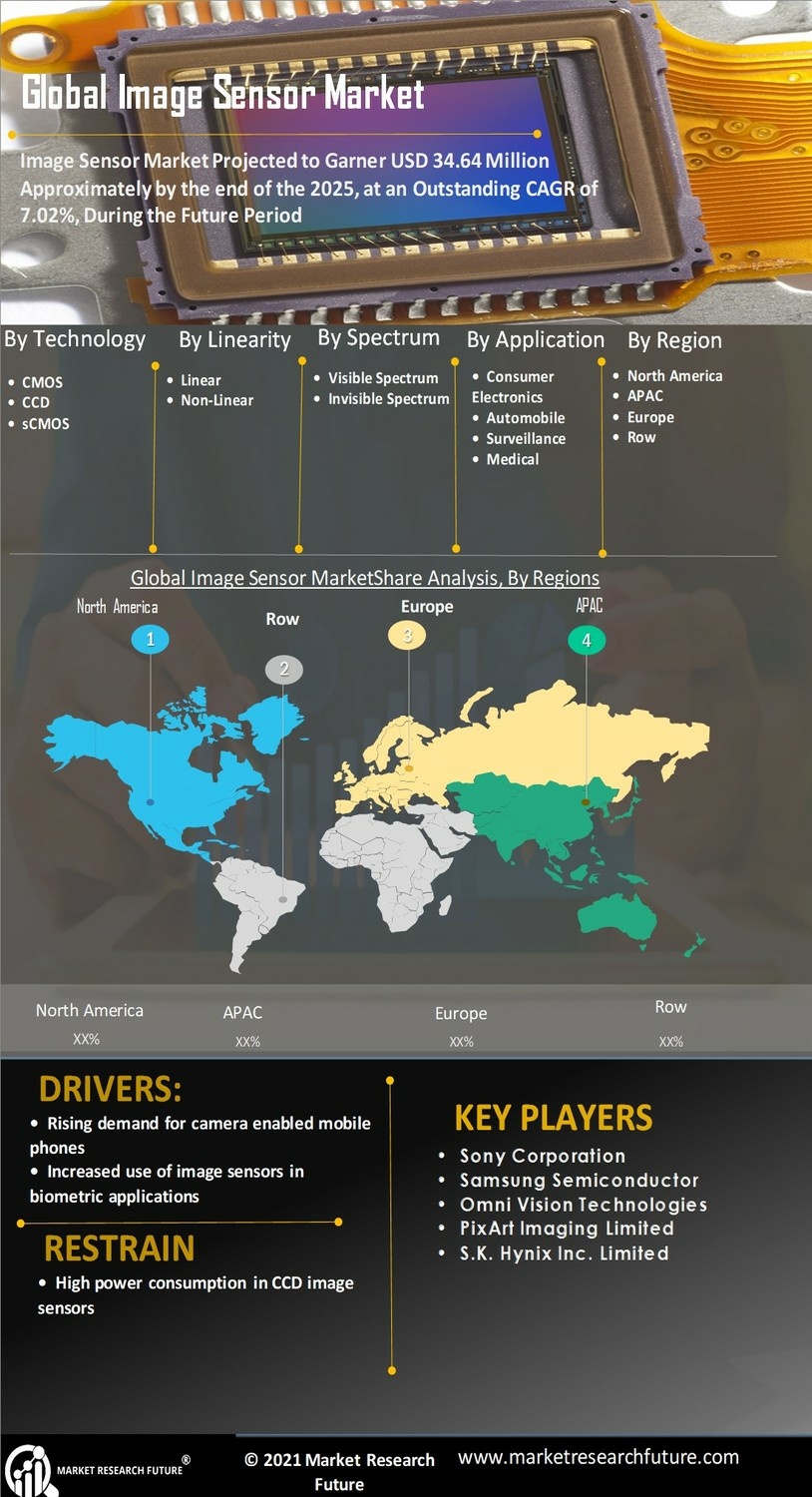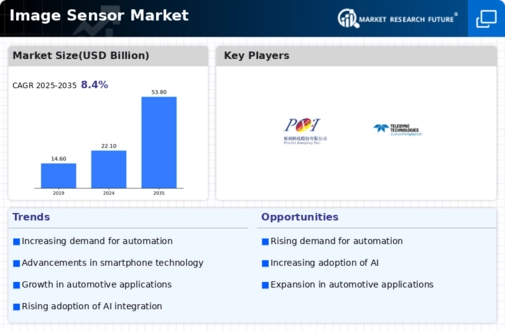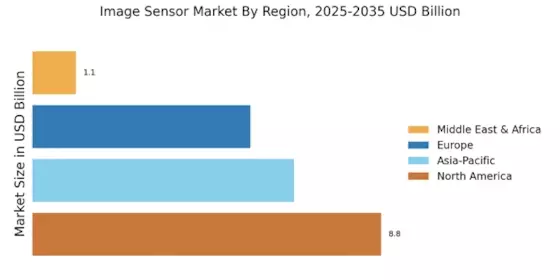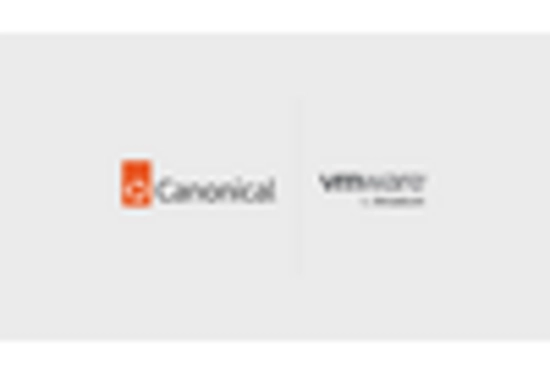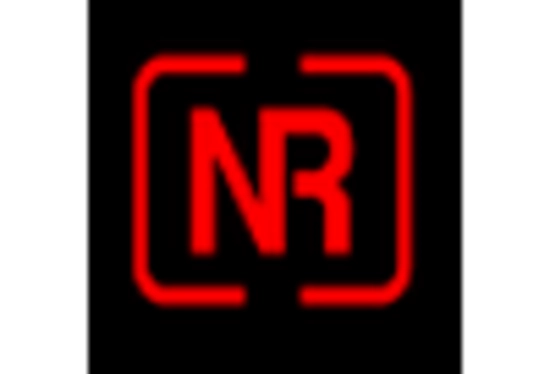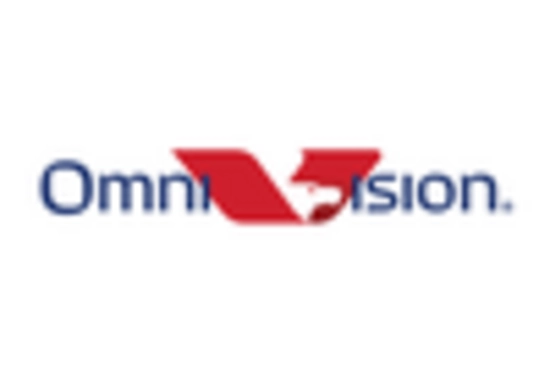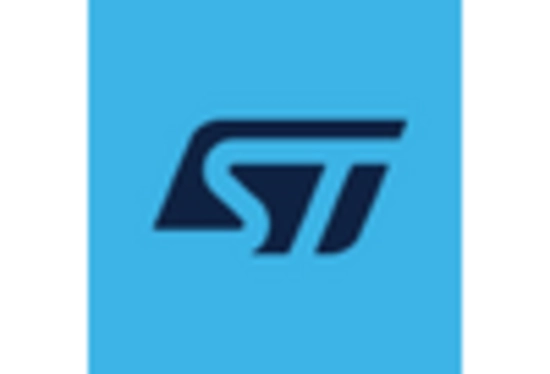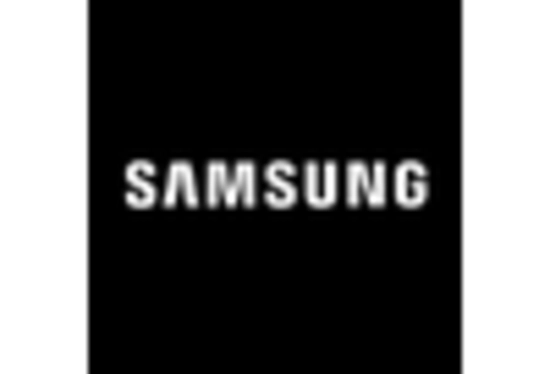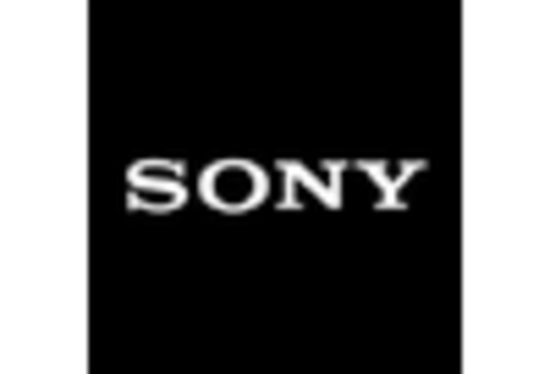Expansion of Automotive Applications
The Image Sensor Market is significantly influenced by the expansion of automotive applications, particularly in the realm of advanced driver-assistance systems (ADAS). As vehicles increasingly adopt features such as lane departure warnings, automatic emergency braking, and parking assistance, the demand for high-performance image sensors rises. In 2025, the automotive segment is expected to account for over 15% of the total image sensor market, driven by the need for enhanced safety and automation in vehicles. This trend suggests that manufacturers are likely to invest in developing specialized image sensors tailored for automotive applications, thereby propelling growth within the Image Sensor Market. The integration of image sensors in vehicles not only improves safety but also enhances the overall driving experience.
Advancements in Industrial Automation
The Image Sensor Market is significantly impacted by advancements in industrial automation. As industries increasingly adopt automation technologies to enhance efficiency and productivity, the demand for image sensors in various applications, such as quality control and robotics, is expected to rise. In 2025, the industrial segment is projected to account for a substantial share of the image sensor market, driven by the need for precise imaging in automated processes. This trend suggests that manufacturers may focus on developing specialized image sensors that cater to the unique requirements of industrial applications, thereby fostering growth within the Image Sensor Market. The integration of image sensors in automation not only improves operational efficiency but also enhances product quality.
Rising Demand for Consumer Electronics
The Image Sensor Market experiences a notable surge in demand driven by the proliferation of consumer electronics. Devices such as smartphones, tablets, and digital cameras increasingly incorporate advanced image sensors to enhance image quality and user experience. In 2025, the market for image sensors in consumer electronics is projected to reach approximately 20 billion USD, reflecting a compound annual growth rate of around 8%. This growth is largely attributed to the consumer preference for high-resolution imaging capabilities, which necessitates the integration of sophisticated image sensors. As manufacturers strive to meet these expectations, the Image Sensor Market is likely to witness continuous innovation and development, further solidifying its position in the electronics sector.
Emergence of Medical Imaging Technologies
The Image Sensor Market is experiencing a transformative phase with the emergence of medical imaging technologies. As healthcare providers increasingly adopt advanced imaging solutions for diagnostics and treatment, the demand for high-quality image sensors in medical devices is on the rise. The market for medical imaging sensors is anticipated to grow significantly, with projections indicating a value of approximately 3 billion USD by 2025. This growth is driven by the need for precise imaging in applications such as endoscopy, ultrasound, and MRI. The Image Sensor Market is likely to benefit from ongoing research and development efforts aimed at enhancing sensor performance and miniaturization, which could lead to more efficient and effective medical imaging solutions.
Growth in Surveillance and Security Systems
The Image Sensor Market is poised for growth due to the increasing demand for surveillance and security systems. As concerns regarding safety and security escalate, both residential and commercial sectors are investing in advanced surveillance technologies. The market for image sensors in security applications is projected to grow at a rate of 10% annually, reaching an estimated value of 5 billion USD by 2025. This growth is fueled by the need for high-resolution imaging capabilities in security cameras, which rely on sophisticated image sensors to capture clear and detailed footage. Consequently, the Image Sensor Market is likely to see a surge in innovation, with manufacturers focusing on developing sensors that offer enhanced performance in low-light conditions and improved image processing capabilities.
